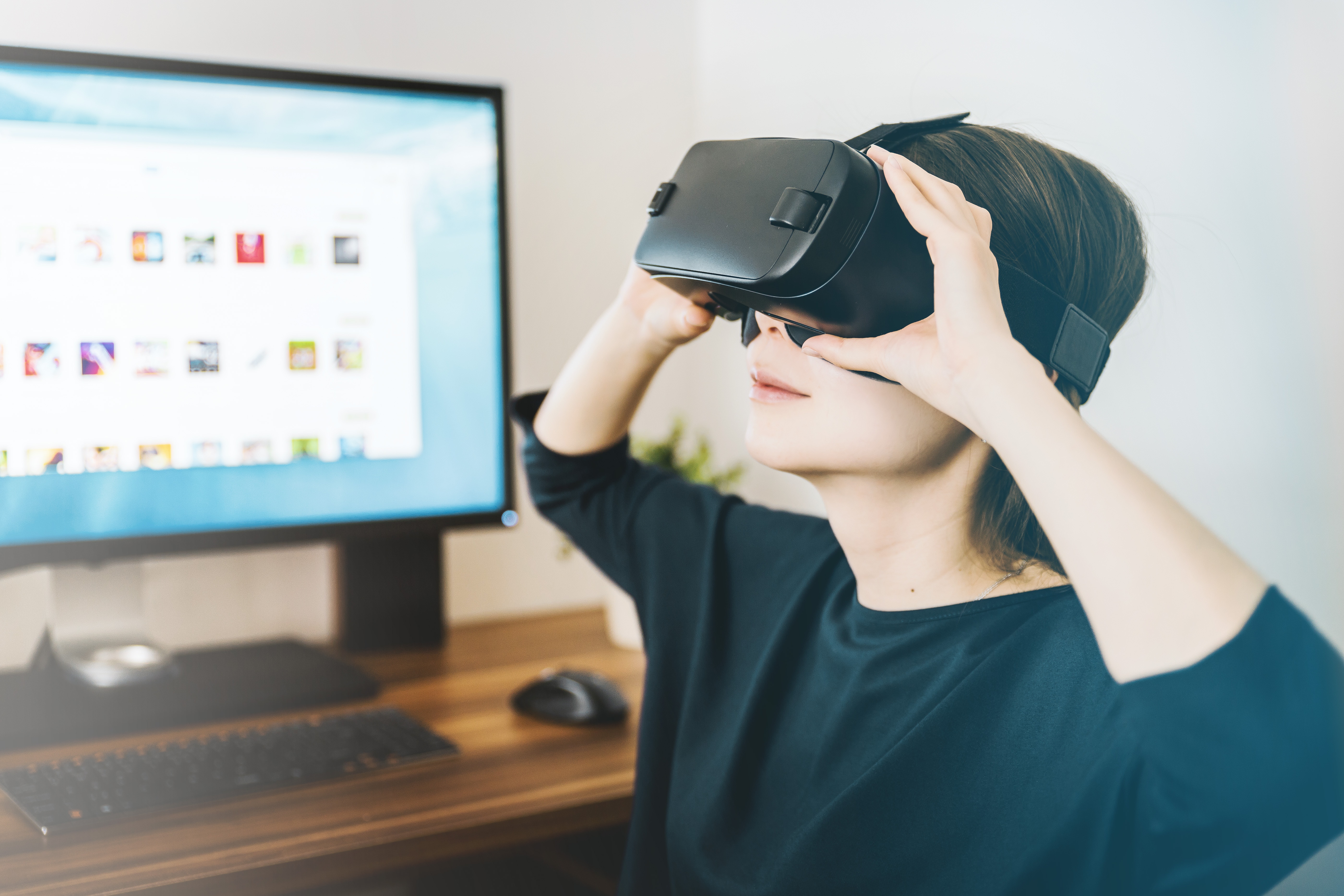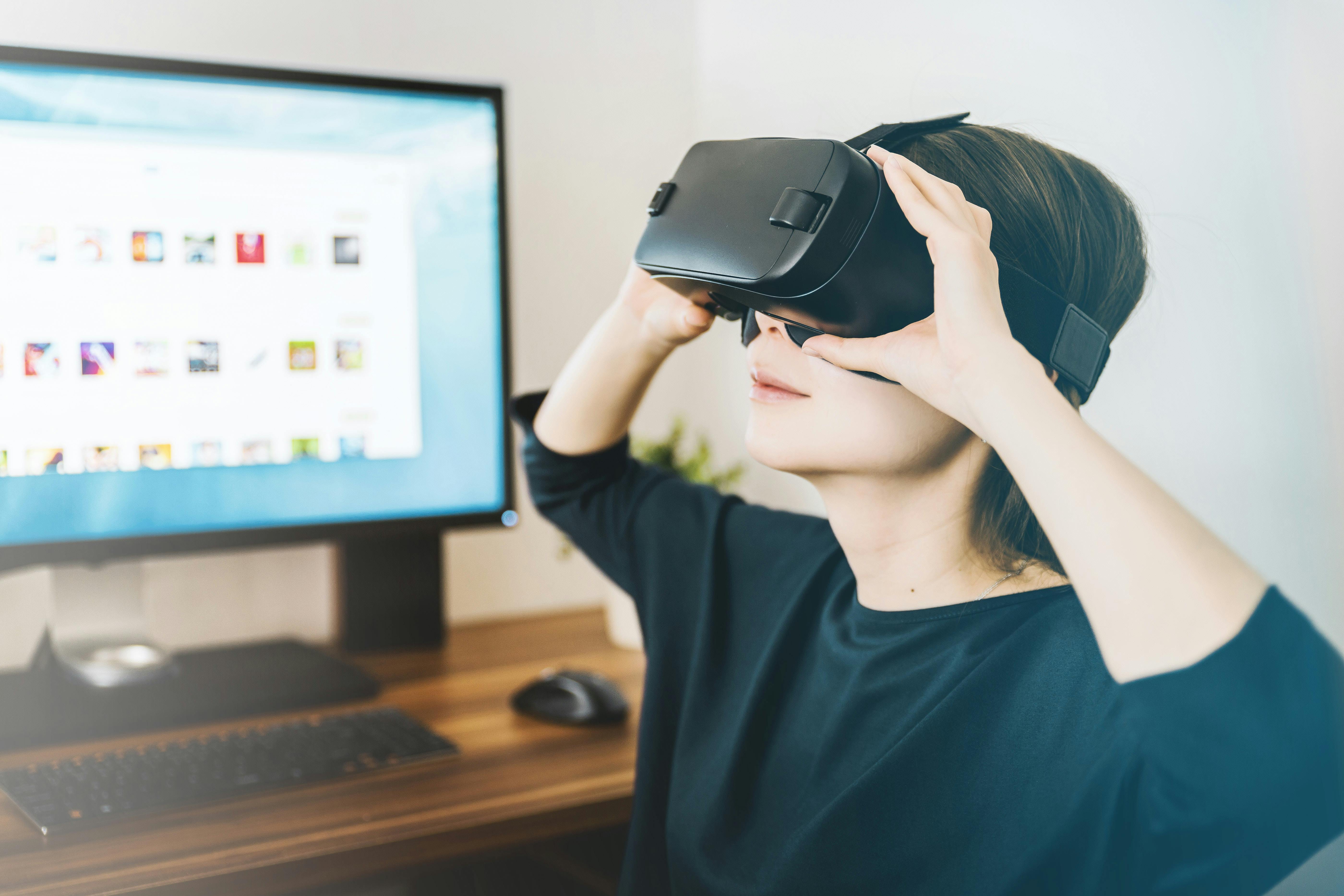
How VR enhances compliance training and improves learning outcomes

Virtual Reality (VR) gives participants the opportunity to immerse themselves in a completely different world, and to prepare themselves for challenging scenarios they might have to face and quick decision-making.

Traditional eLearning courses use content such as articles, videos and quizzes to present information, but these activity types limit the depth of learning. By improving learner engagement and retention of information, research shows that VR can offer a richer, more active learning experience.
In this article, we are going to look at research into the potential of VR for improving learning outcomes, and the ways in which it can enhance compliance training.
How does VR improve compliance training?
A recent Deloitte study, Real learning in a virtual world, looked at how VR can improve learning and training outcomes. Prior to the application of VR, workplace trainers had to weigh up how to effectively prepare employees for potentially dangerous situations.
They could provide traditional learning materials like textbooks and classes, but these would likely not suffice as preparation for highly stressful or complex situations. An alternative option was to offer live training, which is not only hazardous, but costly to run. For many, the choice was between inexpensive and ineffective or effective and dangerous training methods.
The report highlights that, with VR, participants can become totally immersed in a simulated scenario, which can induce the same emotional responses to a real-life experience. This is both a safe and effective way to prepare employees for potentially life-threatening situations.
A summary of the benefits of VR for employees
The application of VR to workplace training has the potential to both improve the learning experience for participants and employee safety when engaging in potentially dangerous activities. The following points summarise the ways in which the technology can improve the learning experience:
1. Increased safety
Traditional eLearning tools such as articles and videos can help participants to understand a new concept, and they are easy for learners to access in their own time, at their own pace. However, these materials won’t prepare learners for highly stressful situations.
A main function of compliance training is to ensure that a workplace is safe and that employees are engaged in safe practices at all times. If participants have the opportunity to practice processes or decision-making before going into potentially life-threatening situations, the chance for human error or unsafe practice is considerably limited.
NASA has been using simulations successfully for many years to train astronauts for space travel. Their goal is to limit risk as much as possible, with astronauts preparing for as many different scenarios as they can imagine.
2. Easy and increasingly affordable to roll out on a large scale
While it may seem costly to purchase a VR headset, there are some surprisingly affordable options. Mobile headsets can cost as little as $15 USD, although a desktop headset could set organisations back $400 dollars.
Yet, according to the 2017 State of the Industry report from the Association for Talent Development, organizations in the US spend an average of $1,273 per employee for learning. Of course, this figure depends on the size of the organization, with smaller organizations spending more per employee, and larger organizations spending less.
3. Experiential learning
“For the things we have to learn before we can do them, we learn by doing them.” - Aristotle
A key advantage of VR is that it offers participants an experiential learning opportunity, which creates stronger memories through employing multiple senses and emotional connections.
VR brings and experiential element to online learning that is difficult to create with videos and articles alone. Repetitive learning or memorisation has long been out of favour in schools, with ‘learning by doing’ being the preferred option. Experiential Learning methodology encourages critical thinking, problem solving and decision making, and this accelerates learning.
It also bridges the gap between theory and practice, and gives employees an opportunity first-hand to apply what has been taught. This improves retention of concepts and new ideas.
4. Engagement of participants
Experiential learning is directly linked to increased engagement in learning. VR provides an opportunity for employees to engage in a realistic scenario in a safe and controlled manner.
For compliance training, participants are also required to remember a significant amount of important information to keep both themselves and others safe. Retention of information is essential in this case to ensure the safety of both team members and customers.
When learners are actively engaged with a task, they will also need to use high order thinking skills to complete it. These include applying knowledge to practical contexts, or using the knowledge they have gained in a creative way.
5. Generates discussion, exciting new technology
Perhaps most importantly, having the opportunity to use VR when learning at work is enjoyable! A ‘gamified’ learning experience has also been proven to increase learner engagement and enjoyment.
While it may seem like a gimmick set to pass by like many other fads, the benefits of VR for learning are clear, and so it is more likely to remain a permanent feature of workplace training.
When comparing practicing safety measures in a virtual world to reading about them in a textbook, it’s easy to see why VR would be more popular and help to generate discussion around the workplace.
At Go1, we offer a number of compliance courses with VR capabilities, in which learners can prepare for challenging situations at work in the safety of a virtual world. VR is an effective, engaging way to learn, and offers employers an exciting alternative to teaching from textbooks and manuals.




